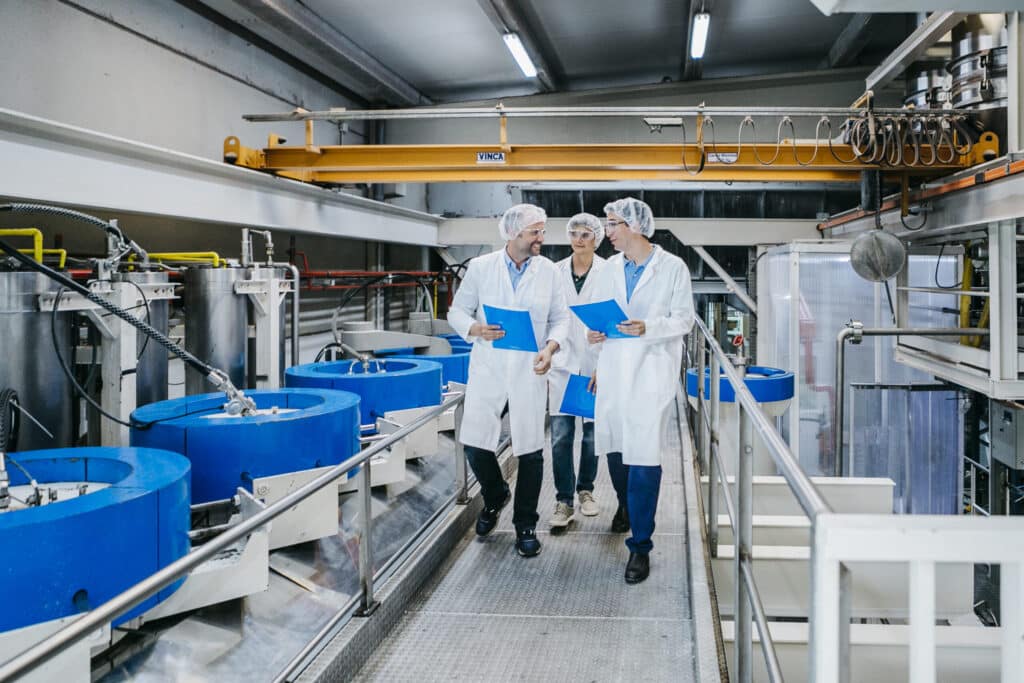Subscribe to our newsletter
- R&D&I Programmes
- Technological Services
- Consultancy Services
- Laboratory Services
- Training and Events
- Sectors


Essential oils are volatile compounds that contain the aromatic essence of plants and flowers. Their extraction is a key process in sectors such as cosmetics, food and pharmaceuticals. Various technologies are available for obtaining them, depending on the type of raw material and the properties that need to be preserved.
Over time, different techniques have been developed to extract essential oils, ranging from artisanal methods to high-precision technologies. In this article, we explore two very different approaches: the enfleurage method, one of the oldest and most delicate techniques, and supercritical CO₂ extraction, a modern, safe and highly efficient alternative.
The enfleurage method is an extraction technique that uses an odorless fat to capture the volatile aromatic compounds found in flowers. There are two variations: cold enfleurage and hot enfleurage, with the cold version being the most widely known.
The process involves spreading a layer of fat onto flat glass trays (chassis) and covering it with fresh flower petals. These petals are periodically replaced until the fat becomes saturated with aromatic compounds. The saturated fat is then treated with ethanol to extract the absorbed aromas. Once the alcohol is evaporated, the final product, an absolute with high aromatic concentration, is obtained.
Compared to the enfleurage method, there are more suitable processes for industrial applications that demand high standards of quality, reproducibility and safety. The most commonly used techniques include:
Steam distillation: involves applying steam to plant material to volatilize the essential oils, which are then collected by condensation. It is the most widely used method.
Solvent extraction: uses organic solvents (such as hexane) to obtain concentrated extracts known as absolutes, especially used in the perfumery industry.
Cold pressing: mainly used for citrus fruits, this method applies mechanical pressure to the peel to release the essential oils.
Supercritical CO₂ extraction: an advanced technology that uses carbon dioxide in its supercritical state as a solvent, enabling clean, efficient and selective extraction.

The enfleurage method and supercritical CO₂ extraction represent two ends of the technological spectrum in essential oil extraction: the former is manual and largely obsolete, while the latter is automated, clean and highly controlled.
Equipment: The enfleurage method requires simple tools—glass chassis, vegetable fat and manual handling instruments. In contrast, CO₂ extraction uses stainless steel autoclaves, pressure and temperature control systems, CO₂ pumps, separators, and sometimes fractionation units.
Operating conditions: Enfleurage is carried out without heat or pressure but requires extended periods. CO₂ extraction operates under supercritical conditions (above 73 atm and 31 °C), allowing for fast, precise processes.
Efficiency and scalability: The enfleurage method has limited scalability and is only suitable for fragile flowers. Supercritical CO₂ technology enables the efficient processing of a wide variety of plant matrices on an industrial scale.
Sustainability and safety: CO₂ extraction avoids the use of toxic solvents, leaves no residues, and produces safer, more sustainable final products.


| Responsible | AINIA |
| Address | Calle Benjamín Franklin, 5 a 11, CP 46980 Paterna (Valencia) |
| Purpose | To attend to, register and contact you to resolve the request you make to us through this contact form |
| Legitimation | Your data will be processed only with your consent, by checking the box shown on this form |
| Recipients | Your data will not be transferred to third parties. |
| Rights | You have the right to request access to, correct or delete your data. You can also request that we limit its processing, oppose it and request the portability of your data by contacting our postal address or [email protected] |
| More info | You can find more information in our Privacy Policy |
| DPO | If you have any questions about how we will treat your data or would like to make any suggestions or complaints, please contact the Data Protection Officer at [email protected] or at the Data subject support form |
I consent to the use of my personal data to process my request, as set forth in your Privacy Policy
I consent to the use of my data to receive information and commercial communications from your entity.
